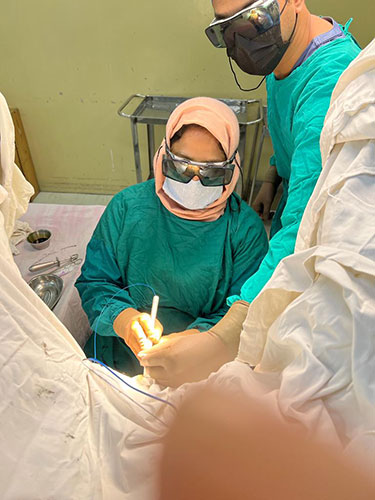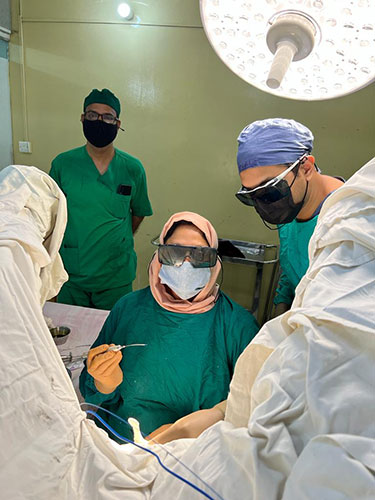LASER Surgery

How is LASER surgery better than conventional surgery?
LASER surgery or LASER therapy is a day-care procedure that offers several advantages over traditional surgery. Compared to banding surgery, laser effectively treats hemorrhoids, improves symptoms and reduces post-operative pain. Similar benefits are seen for patients with severe anal spasms, external thrombosis, fissure, and sentinel tags, fistula & varicose veins due to ever-growing advantages, namely:
- Less operation time, discharge within a few hours
- Back to routine life in 3-5 days
- Greater surgical precision
- Sutureless treatment with no scars
- Fastest recovery as there are no cuts or stitches
- Quick relief from the symptoms
- Less blood loss during surgery
- No or minimal post-operative pain
- Reduced risk of infection
- Reduced risk of rectal stenosis or prolapse
- Aesthetically the best procedures – helps as a confidence-booster for the patient.
- The anal sphincter action is well preserved, (no chances of incontinence fecal leak).
- Least recurrence rates
- Fewer doctor visits post-surgery
- High success rates
- No need for general anesthesia. Local or spinal anesthesia is applicable for this surgery
What are the anorectal diseases that require LASER surgery?
Piles
Piles or hemorrhoids is excessive of arterial blood flow, causing dilations in the hemorrhoidal plexuses and, consequently congestion. Enlarged veins that are located at the junction of rectum and anus are known as Hemorrhoids.
Anorectal Fissures
An anal fissure is a small tear or a crack in the lining of the anus. Anal fissure may occur when passing hard or large stools causing pain and bleeding during bowel movements.
Anal Fistula
An anal fistula is a small, infected channel that can develop between the end of the bowel and the skin near the anus. Most anal fistulas are the result of an infection in an anal gland that spreads to the skin.
Pilonidal Cyst
Pilonidal cysts are the sacs filled with hair and skin debris that are formed at the top of the crease of buttocks above the sacrum. A painful abscess can form if the cyst and overlying skin become infected.
What are the common anorectal diseases in men & women?
Anorectal diseases in adults may be too common yet undiagnosed and untreated. This is because most of the adult patients feel shy or embarrassed to talk to their doctor, especially women. Fortunately, these problems can be recognized early so, it is important to ensure that symptoms of anorectal diseases such as rectal pain and bleeding are thoroughly evaluated by the doctor. Some other symptoms reported include:
- Pain/bleeding while passing stool
- Unable to sit continuously
- Blood spotting
- Strain while passing a motion
A large proportion of women live with these problems who may seek the help of female doctors for piles, hemorrhoids, fistula or anal fissure.
What to expect before, during and after LASER colorectal (procto) surgery or procedures?
Before Surgery: The medical team will explain to you about the procedure and also give you instructions about do’s and don’ts before and after the surgery. You will also undergo some pre-operative investigations.
During Surgery: Surgery is carried out under local anesthesia by a specialized team of anesthetists, laser proctology surgeon, and other medical staff. Depending on the type of surgery, surgeons perform the surgery in a few minutes to an hour.
After Surgery: Depending on your health status, you may need to stay in the hospital for a few hours or overnight. Recovery varies from person to person. Generally, patients go back to day-to-day activities in a day or two.


